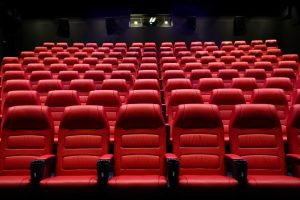The theater experience is a multifaceted one, with numerous elements contributing to the overall enjoyment and engagement of the audience. Among these elements, seating plays a crucial role in shaping the viewer's experience. This article delves into the specifics of how seating affects various aspects of watching a performance in a theater.
Comfort and Viewing Angles
Ergonomic Design
Comfortable seating in theaters enhances the overall experience significantly. Ergonomically designed seats support the natural curve of the spine, reducing discomfort during long performances. The padding and material of the seat also contribute to comfort. Seats with high-quality foam and breathable fabric offer a pleasant experience, even in extended viewings.
Line of Sight
The design and arrangement of seats impact the line of sight for each audience member. Stadium seating, where rows are tiered, ensures an unobstructed view for everyone. The angle of incline in each row is critical; a minimum incline of 15 degrees is generally recommended to prevent sightline issues.
Acoustic Considerations
Seat Materials and Sound Absorption
The materials used in theater seats can affect the acoustics of the space. Seats with fabric upholstery and dense foam can absorb sound, reducing echo and enhancing sound clarity. This absorption is crucial for dialogue-heavy plays or orchestral performances where clarity is paramount.
Seat Arrangement and Sound Distribution
The arrangement of seats can influence how sound distributes throughout the theater. Seats spaced too far apart can lead to uneven sound distribution, causing volume and clarity inconsistencies. An optimal layout ensures a uniform audio experience for all audience members.
Accessibility and Safety
Aisle Spacing and Seat Access
Aisle spacing and seat access are vital for both accessibility and safety. Adequate spacing allows for comfortable movement and quick evacuation in emergencies. Seats should have sufficient legroom, typically around 12 to 18 inches, to accommodate different heights and facilitate easy ingress and egress.
Economic Aspects
Cost Efficiency and Longevity
When selecting theater seating, cost efficiency and longevity are key considerations. Seats with durable materials and sturdy construction have a longer lifespan, reducing the need for frequent replacements. This durability is cost-effective in the long run, despite the higher initial investment.
Maintenance and Cleaning
The ease of maintenance and cleaning of theater seats also impacts economic aspects. Seats with removable and washable covers or materials resistant to stains and wear can save significant time and money in upkeep.

Conclusion
Theater seating, as we have explored, plays a pivotal role in shaping the audience's experience. It influences comfort, viewing angles, acoustics, accessibility, safety, and even the economic aspects of theater management. When designed and arranged thoughtfully, theater seating can greatly enhance the immersive experience of any performance.
To learn more about optimal theater seating solutions, visit Theater Seating.